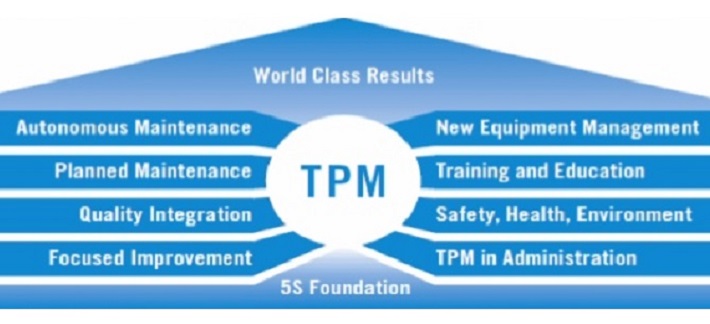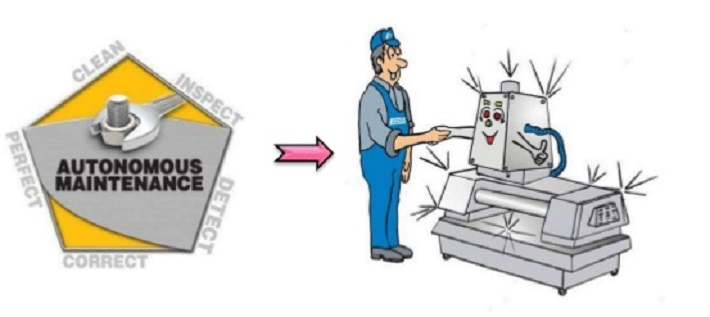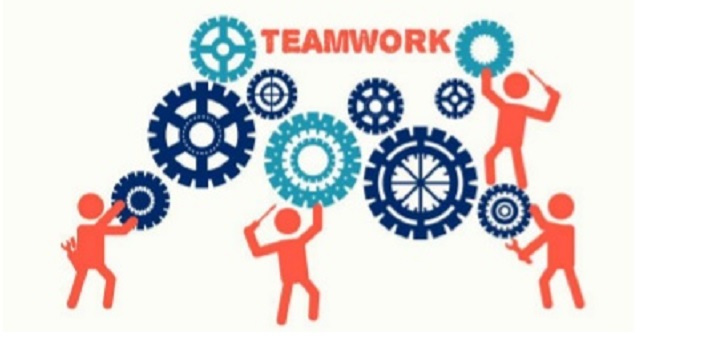Total Productive Maintenance (TPM) is a maintenance program which involves a newly defined concept for maintaining plants and equipment’s.
TPM or total productive maintenance is a holistic approach to equipment maintenance that strives to achieve perfect operation and optimum production.
Benefits of TPM include:
- No Small Stops or Slow Running
- Increase in overall equipment effectiveness.
- No Breakdowns
- Equipment’s with fewer breakdowns, stops and defects.
- No Defects In addition it values a safe working environment
- Increase in productivity and income of the company.
- Quality products leads to reputation in the market.
Total productive maintenance emphasizes proactive and preventative maintenance to maximize the operational efficiency of equipment.
It blurs the distinction between the roles of production and maintenance by placing a strong emphasis on empowering operators to help maintain their equipment.
Implementation of a TPM program creates a shared responsibility for equipment that encourages greater involvement by plant floor workers.
In the right environment this can be very effective in improving productivity (increasing up time, reducing cycle times, and eliminating defects).
TPM Evolution
The traditional approach to TPM was developed in the 1960s and consists of 5S as a foundation and eight supporting activities (sometimes referred to as pillars of TPM).
The goal of 5S is to create a work environment that is clean and well-organized. It consists of five elements:
Sort (eliminate anything that is not truly needed in the work area)
Set in Order (organize the remaining items)
Shine (clean and inspect the work area)
Standardize (create standards for performing the above three activities)
Sustain (ensure the standards are regularly applied)
8 Pillars of Total Productive Maintenance TPM
The eight pillars of TPM are mostly focused on proactive and preventative techniques for improving equipment reliability.
1. Autonomous Maintenance
2. Planned Maintenance
3. Quality Maintenance
4. Focused Improvement
5. Early Equipment Management
6. Training and Education
7. Safety, Health, Environment
8. TPM in Administration

Autonomous maintenance places responsibility for routine maintenance, such as cleaning, lubricating, and inspection, in the hands of operators. Operator can identify & correct the primary problems. Mostly done on daily basis.
This approach:
- Gives operators greater “ownership” of their equipment.
- Increases operators’ knowledge of their equipment.
- Ensures equipment is well-cleaned and lubricated.
- Identifies emergent issues before they become failures.
- Frees maintenance personnel for higher-level tasks.

Planned maintenance schedules maintenance tasks based on predicted and/or measured failure rates. This approach:
- Significantly reduces instances of unplanned stop time.
- Enables most maintenance to be planned for times when equipment is not scheduled for production.
- Reduces inventory through better control of wear-prone and failure-prone parts.
Quality maintenance designs error detection and prevention into production processes. Apply Root Cause Analysis to eliminate recurring sources of quality defects. This methodology:
- Specifically targets quality issues with improvement projects focused on removing root sources of defects.
- Reduces number of defects.
- Reduces cost by catching defects early (it is expensive and unreliable to find defects through inspection).
Focused improvement helps in small groups of employees work together proactively to achieve regular, incremental improvements in equipment operation.
• KOBETSU – Individual or Focused
• KAIZEN – Continuous Improvement or change for betterment
• Active Involvement of all for maintenance activity.
Using this method:
- Recurring problems are identified and resolved by cross-functional teams.
- Combines the collective talents of a company to create an engine for continuous improvement.

Early equipment management directs practical knowledge and understanding of manufacturing equipment gained through TPM towards improving the design of new equipment. This ensures that the new equipment reaches planned performance levels much faster due to fewer startup issues. Maintenance is simpler and more robust due to practical review and employee involvement prior to installation.
Training and education helps to fill in knowledge gaps necessary to achieve TPM goals. Applies to operators, maintenance personnel and managers. Operators develop skills to routinely maintain equipment and identify emerging problems. Maintenance personnel learn techniques for proactive and preventative maintenance. Managers are trained on TPM principles as well as on employee coaching and development.
Safety, Health, Environment pillar targets to maintain a safe and healthy working environment. Eliminates potential health and safety risks, resulting in a safer workplace. Specifically targets the goal of an accident-free workplace.
TPM in administration ensures to apply TPM techniques to administrative functions. Extends TPM benefits beyond the plant floor by addressing waste in administrative functions. Supports production through improved administrative operations (e.g. order processing, procurement, and scheduling).
Normally it is applied after first four pillars and addresses major losses including:
– Processing loss
– Cost loss in areas like accounts, marketing & sales
– Communication loss
– Idle loss
– Setup loss
– Accuracy loss
– Office equipment breakdown
– Communication channel breakdown
– Time spent on retrieval information
– Non availability of correct online stock status